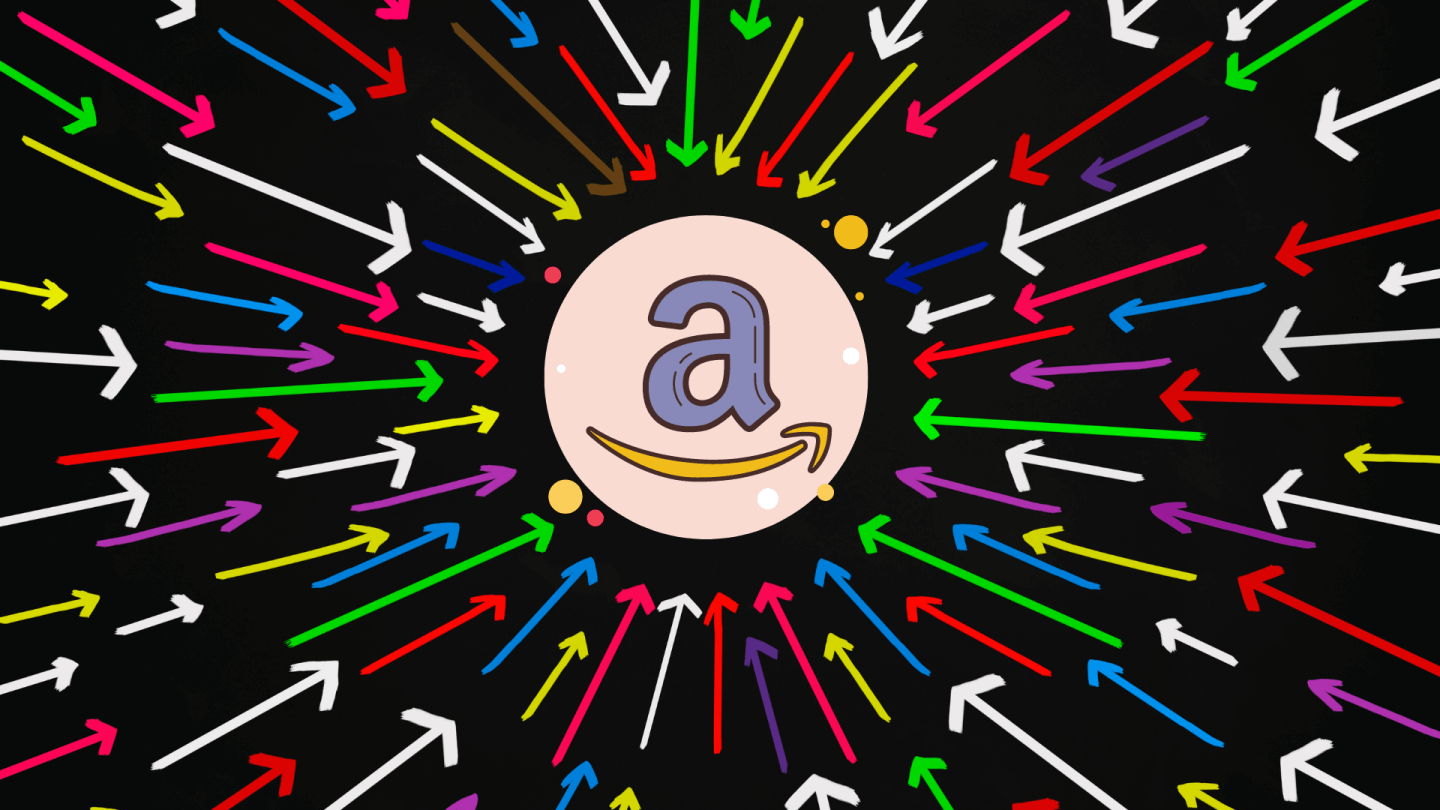If you’re selling your product on Amazon, you’re already well-positioned to take full advantage of everything that this world-leading marketplace can give you to support your sales. It’s an incredible sales platform, and there’s great profit to be had using it as a sales base.
But you can do so much more to drive your sales on Amazon. So, how do you encourage external traffic to your Amazon listing?
First up, what do we mean by external traffic?
We’re talking about potential customers on the internet who aren’t on Amazon and are searching for whatever it is they need on that platform. These people are somewhere else on the net. If you can find these people – the external traffic to Amazon – and engage with them, you can push them to your product listing on Amazon and generate more sales!
There’s another big plus to this. If you’re driving this external traffic direct to your Amazon listing page (even if it’s via a landing page that you’ve built – more on that in a moment) that means the external traffic that’s being driven is bypassing the Amazon search results page – a page that’s usually teeming with competitors.
So you could even suggest that the external traffic you drive to your Amazon listing is more specifically focused on your product. That means a higher propensity to buy your product.
Driving external traffic to your Amazon listing is something you don’t want to miss out on. Getting more traffic to your listing will help boost your ranking on Amazon and speed up your sales.
What should you do to drive external traffic and where should you start?
It’s not rocket science, it’s all about strategies.
There are some key strategies you can use to help drive external traffic to Amazon listings. But before we look at these let’s talk about your product and then look at what some Amazon statistics are telling us.
Revisit your product, its benefits and target market
This is a no-brainer, and you’ll have done this when planning your product, sourcing it, and listing it on Amazon, but it’s time for a revisit.
Take these three simple steps.
- Write down the benefits of your product to customers by way of a refresher but also to see if you can come up with anything new.
- Consider your target market again in light of what you’ll have written down in step one. It’s likely you’ll discover something new that you haven’t originally thought of. After all, thinking can change over time. If you haven’t discovered anything new, still take step three.
- Have a deep think about where you can find your target market on the wonderful web. Where do they ‘live’ or hang out? You’ll find a lot of what you come up with will be ideas that you hadn’t gleaned when you did your original thinking! Back then, in the early days of your listing, it’s likely you were thinking purely in terms of the profile of your target visitor on Amazon.
Let’s look at a quick example to bring this alive.
You have a fishing product listed on Amazon. You have a pretty good idea of what someone who is interested in fishing is going to be searching for on Amazon. But this is only on Amazon.
Having run through the three steps above, you’ll get an idea of where to find these targets on the web, away from Amazon. In this example, it could be:
- Social media groups about fishing
- Search engine results about fishing
- Websites to do with certain fishing destinations
- A YouTube fishing channel
- Fishing clubs with newsletters
- Other product websites – including your own.
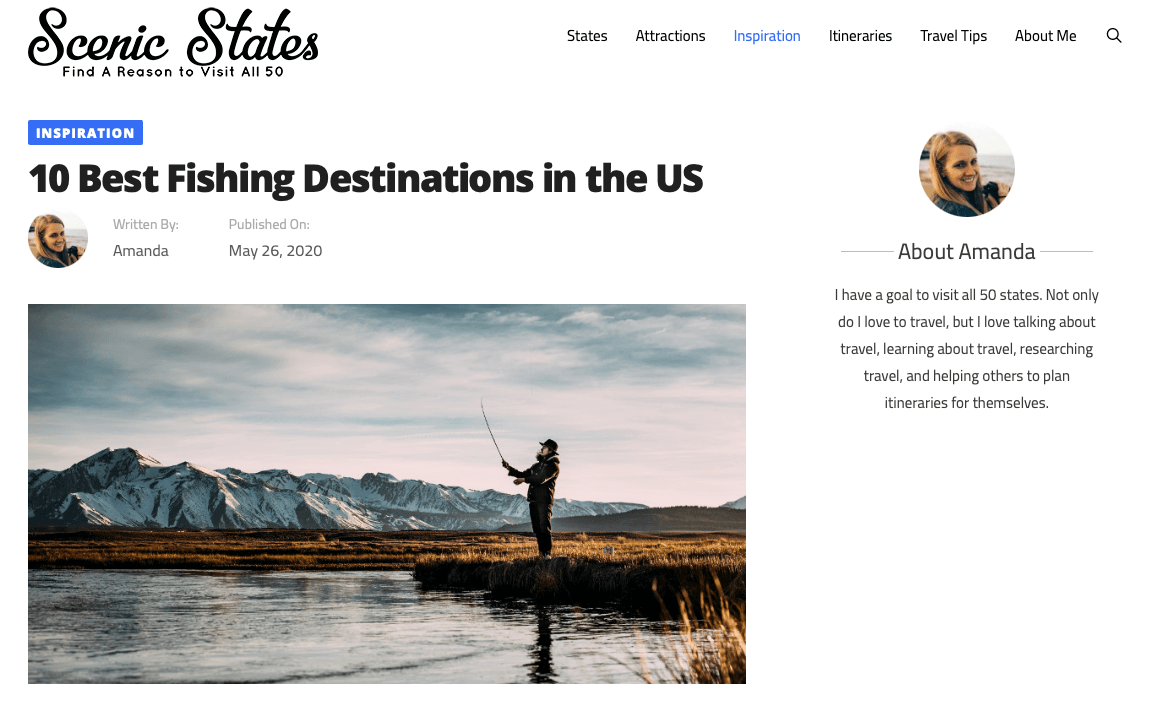
(Source: Scenic States)
These are all rich seams for you to tap to find your external traffic to Amazon targets and drive them to your Amazon listing.
Let’s look at some stats on external traffic to Amazon:
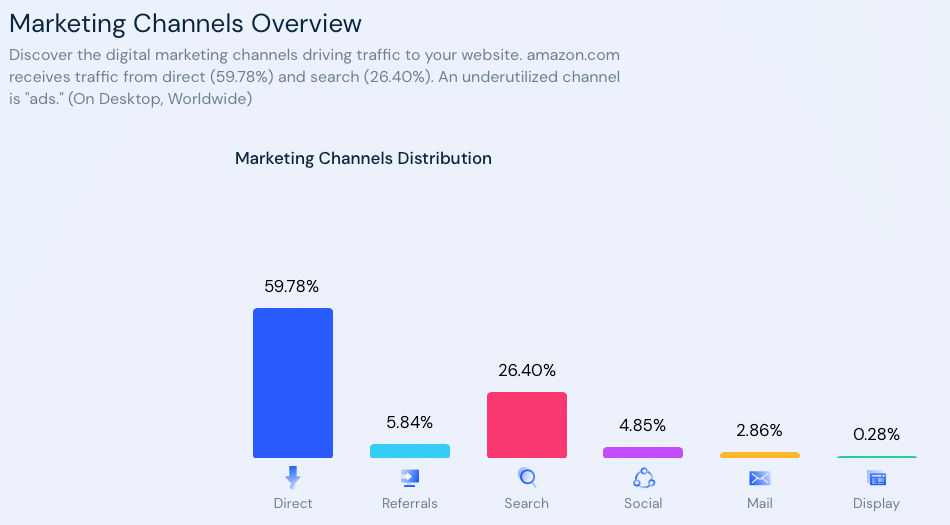
(Source: Similarweb)
Wow. That’s just over 40% of traffic. Find them and drive them to your listing. It’s an activity that doesn’t even cost you in extra Amazon keywords (and negative keywords).
Let’s drill down and look at social media:
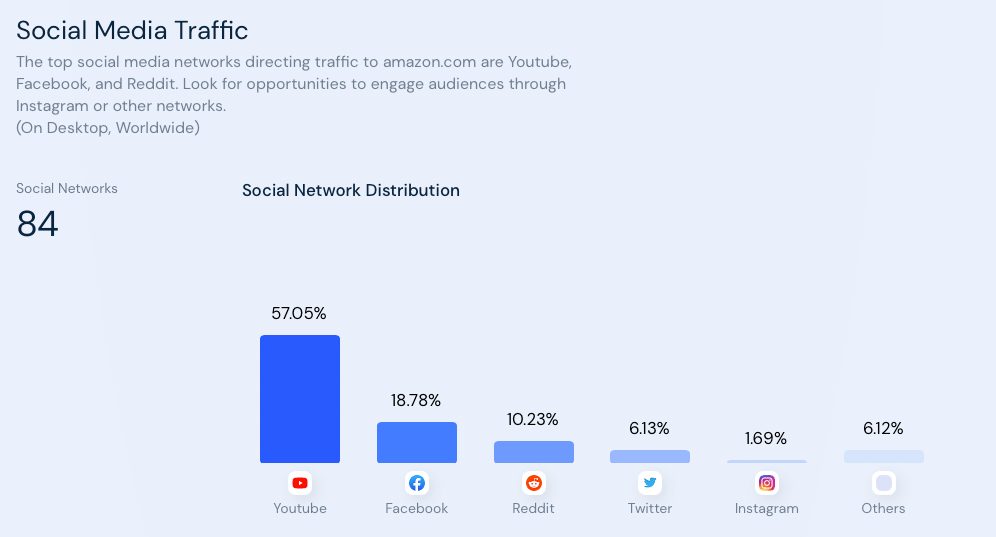
Now we’re talking, and you are staring at a key strategy for driving that external traffic to your Amazon listing.
A word about ‘direct’ to Amazon and landing pages
When we use the word ‘direct’ in the context of driving external traffic to your listing, we’re actually talking about two general approaches.
The first is what it says on the tin, and you’re literally sending the external traffic direct to your listing from wherever you’ve engaged with that traffic (eg on a directory site).
The second is a kind of ‘indirect-direct’. This is when you send traffic to Amazon via a landing page that you’ve created. You can find out more about using landing pages and the tools you need to launch and set up targeting funnels to build lists at Landing Cube.
The general consensus among sellers is that using a landing page is the better approach.
Why? Here are three reasons.
Sending them to a landing page gives you a chance to collect some of their data.
This is handy because it means you can build up your database of potential customers and contact or sell to them later on. If they go ‘direct-direct’ to Amazon, Amazon takes them as a customer if they buy, rather than you, and you won’t be able to sell to them again unless a whole lot of luck is at play.
On your landing page, you’re able to persuade the customer even more about the benefits of your wonderful product.
This is why a landing page can be a good filter. What you’re doing is making absolutely sure that anyone who goes to your Amazon listing from your landing page is pretty likely to buy your product. Anyone that you haven’t managed to persuade or reaffirm on your landing page will wander off.
What does all this mean? It means you’re ‘protecting’ your Amazon stats from getting ‘damaged’ or ‘diluted’. In other words, it’s better for people to bail on buying your product on your landing page than on your Amazon listing – Amazon is none the wiser.
Lots of people landing on your listing and not buying could affect your Amazon ranking. If the people you send to your listing are a super-saturated concentration of truly potential buys, Amazon will notice, and this is likely to help your rankings.
Whatever mechanism you use on your landing page to capture visitors’ details to enhance and expand your customer database, you’re learning more about them.
This information can be very useful for you in fine-tuning or realigning your targeting. For example, if you discover that women between 40 and 50 simply love fishing – who knew – you can go after that group elsewhere on the web.
Now let’s get back to these key strategies.
6 Key strategies you can use to help drive external traffic to listings
Key strategy number 1 – Spreading your net
We’ve looked into this already – it’s spreading your marketing net, on the net that isn’t just Amazon.
Get your brand and product on other targeted websites, blogs, social media channels and listing directories – all with links to your product on Amazon via your landing page!
Note: you might feel the need to tweak the copy on your Amazon landing page to sync better with what you’re saying about it on these external sites. This shouldn’t be too big a task so don’t leave this not done.
Key strategy number 2 – Strengthening your brand and content
Out there on the wide, wide web you might find your branding needs to be stronger to engage with potential customers.
Study the sites and channels where you intend to lure your target and look at your competitor brands and what they’re doing. Is there anything that they’re doing brand-wise that you could use to adapt and strengthen your brand? Maybe they’re even teaching you some things to avoid doing.
For example, other brands might be using a different tone of voice or packaging that seems to be attracting customers. What could you do that’s similar?
Make sure your tone and branding are consistent across Amazon and all the other sites where you’re going to be talking about your product.
Finally, do some housekeeping on the content of your listing. Is it up to scratch? Is it well-written? Is your search engine optimization (SEO) as good as it could be? Is what you’re saying compelling and engaging? If not, fix, fix, fix.
Make sure you’ve optimised your content and used all the tools at your fingertips to close those sales when all that external and nicely primed traffic hits your Amazon listing. For example, do you have a repricer tool in place on your listing to keep ahead of the competition at the point of sale? Look into this and other tools. After all, it would be a shame to go to all the effort to drive external traffic to Amazon for them not to buy!
Key strategy number 3 – Embrace select social media channels

Get in there and on them. Choose the best social media channels in which to participate.
If your product sells because it’s decorative or gorgeous, perhaps aim for more visual social media channels, like Instagram.
If your product sells well when you’re able to demonstrate how to use it, perhaps getting it on YouTube should be a priority. The popularity of Tik Tok also gives you the ideal platform to visually present your product.
If your product sells when you’re able to give lots of wordy and intrinsic detail about it, maybe it’s time to start a blog.
Key strategy number 4 – Find and befriend bloggers and influencers
Be open, friendly, engaging and solicitous of other people’s activities on the web. After all, the web these days is one big mutual benefit society. A blogger or influencer is more likely to plug your product if you can help them in some way, too.
Meet people online, start conversations, and offer to talk about their product if they talk about yours. Offer to send them traffic if they reciprocate.
Note: sign up and get involved as an Amazon affiliate using Amazon Associates. This can stand you in good stead when creating links around the web, and you might even make some money out of your affiliate links too.
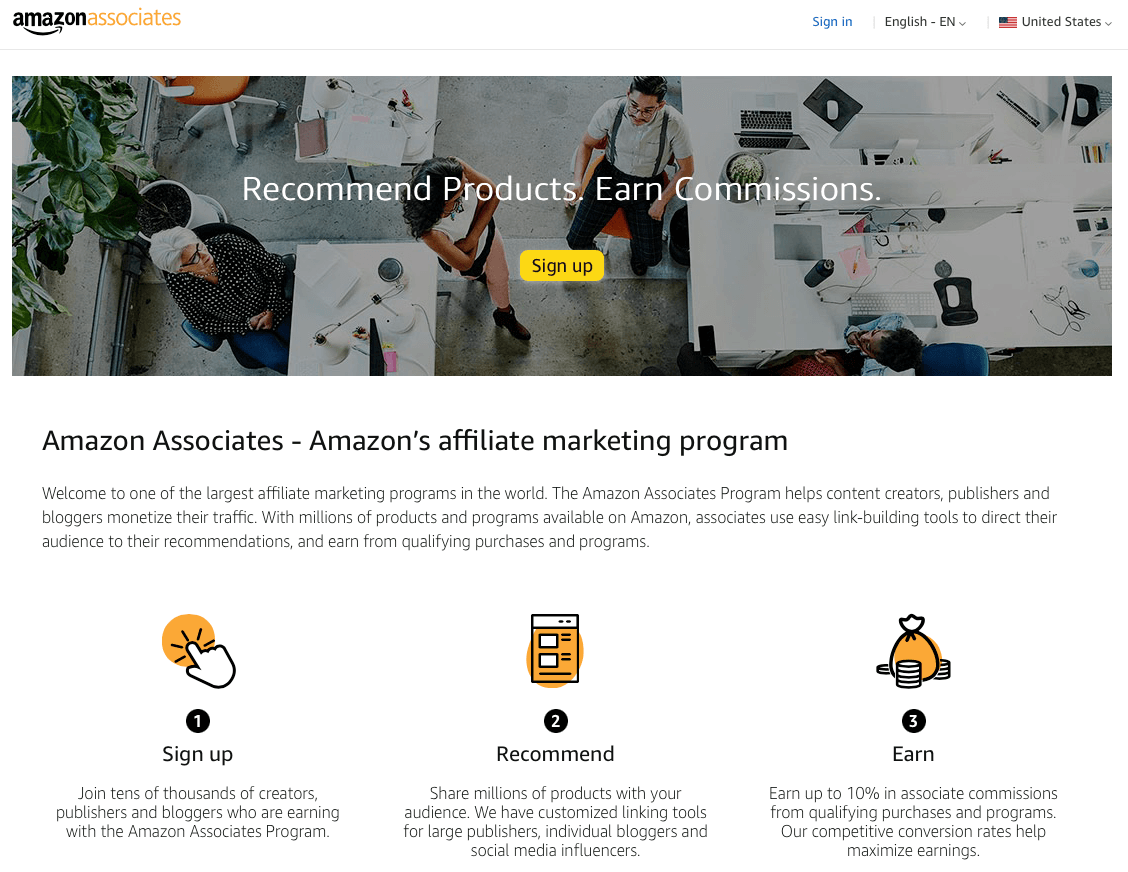
Key strategy number 5 – Advertise on the web
There are lots of channels out there waiting for you to advertise on. Decide which is best for you. Study the big hitters first, like Google, Instagram, Facebook and YouTube. Decide which is best for your product and give it a try for a limited period, analyse the results, then tweak accordingly, and rinse and repeat.
Key strategy number 6 – Promote on deal websites
There are a lot of deal websites out there. Offer product promos on them and direct them to your Amazon listing.
There are lots to do but don’t try and do it all at once. Take your time. Remember, little by little fills up the pot. And have fun.

